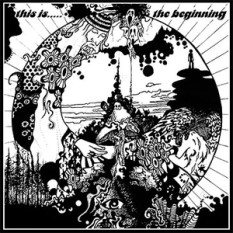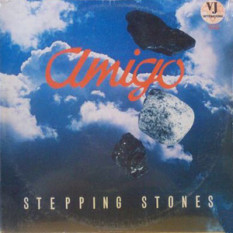Stoner rock and stoner metal are terms describing sub-genres of rock and metal music. They are typically slow-to-mid tempo, low-tuned, and bass-heavy, incorporating elements of traditional heavy metal. psychedelic rock, blues-rock and doom metal into a more repetitive and riff-centred style. Other common traits include melodic vocals and 'retro' production. The genre emerged during the early 1990s and was pioneered by the Californian band Kyuss and New Jersey's Monster Magnet
The progenitors of stoner rock, like their followers today, often share the characteristic that they and their audiences are recreational users of marijuana, or "stoners". While it would be grossly inaccurate to describe all fans and performers of the styles and bands listed on this page as marijuana users, it is certainly accepted that the effects of marijuana and the often downtuned, slow, or psychedelic riffs of stoner rock complement one another — which eventually led to the common usage of the term "stoner rock" to define the genre, with "stoner metal" coming into use later when a heavier and slower style emerged.
Stoner rock is closely related to the term "desert rock", which was used to describe stoner pioneers Kyuss, from California's Palm Desert. While stoner rock is thought to be so closely related to desert rock as to be synonymous, in reality much stoner rock is groove rock and does not retain the psychedelic or folksy elements of desert rock (for example Clutch are not particularly psychedelic); meanwhile stoner metal is likewise related but not identical to sludge metal and doom metal. Stoner metal can include influences from genres such as death metal (such as acid bath) or can be southern rock influenced metal like later corrosion of conformity, whereas stoner doom (such as sleep and electric wizard) is usually much slower and generally bassier and psychedelic.
This kind of connection between music and the use of drugs is not unique in music culture. Similar comparisons can be made between dance music and recreational drugs such as ecstasy. Various musicians who identify themselves as marijuana users, notably Pantera (who have included cannabis logos on their merchandise) do not qualify as "stoner rock" as the style of their musical output is largely outside the genre.
Like most subgenres of music, the origins of stoner rock are hard to trace and pinpoint. It can be said, however, that when mainstream culture co-opted blues, rock and roll was divided in to two sects: fast and slow. Stoner rock is the slower and often based in minor keys.These two elements give stoner rock its specific tinge. Nevertheless, stoner rock has its known progenitors and signature songs that helped shape the genre. The notoriously influential metal idols Black Sabbath — especially their song "Sweet Leaf" — were a significant force in the evolution of stoner rock.
Although Black Sabbath were one of the first bands to popularize this type of music, they were not the first to produce it, nor can they be accurately described as a stoner band. Various 60's and 70's bands experimented with guitar sounds that inspired future generations, with Jimi Hendrix, Cream, Deep Purple, Pink Floyd and Led Zeppelin firmly among them. Hendrix's "Band of Gypsys" pumped out riff-laden, jam session type tunes with obvious psychedelic overtones, while Led Zeppelin's "Physical Graffiti" displayed a lighter side to the emerging genre. However, it wasn't until after the electropop of the 80's and eventually grunge of the early 90's had taken the stage that people noticed a new style of music was being created from elements of different genres. Allmusic summarizes this fusion as follows:
Stoner metal bands updated the long, mind-bending jams and ultra-heavy riffs of bands like Black Sabbath, Blue Cheer, Blue Öyster Cult, and Hawkwind by filtering their psychedelia-tinged metal and acid rock through the buzzing sound of early Sub Pop-style grunge.
Over the years, Kyuss has become nearly synonymous with stoner rock. After their initial EP (as Sons of Kyuss) and Wretch releases, they emerged from Palm Desert California to wider attention with 1992's Blues For The Red Sun. The album was hailed as a landmark by critics and fans alike, but commercial success remained low during their entire existence. NME Magazine described Kyuss' musical ambition as an attempt to figuratively melt "a hundredweight of hot desert sand into metal".
Since their break-up, the success of the bandmates' other projects has caused the Kyuss back catalogue to become more widely listened to and their fanbase has inevitably swelled. The sound has been continued on by directly descendant bands Unida, Slo Burn, Hermano, Fu Manchu, and at times by Queens of the Stone Age, who have since largely departed from Kyuss' stoner rock sound.
Today, not many bands associated with stoner rock enjoy mainstream success. In the USA, bands affiliated with the genre, such as Monster Magnet, Queens of the Stone Age and Clutch remain popular in the mainstream. Elsewhere, Canada's sHEAVY and Priestess, Sweden's Spiritual Beggars, Britain's Orange Goblin and Germany's Colour Haze enjoy consistent regional support, while Australia's Wolfmother have achieved international success. .
































